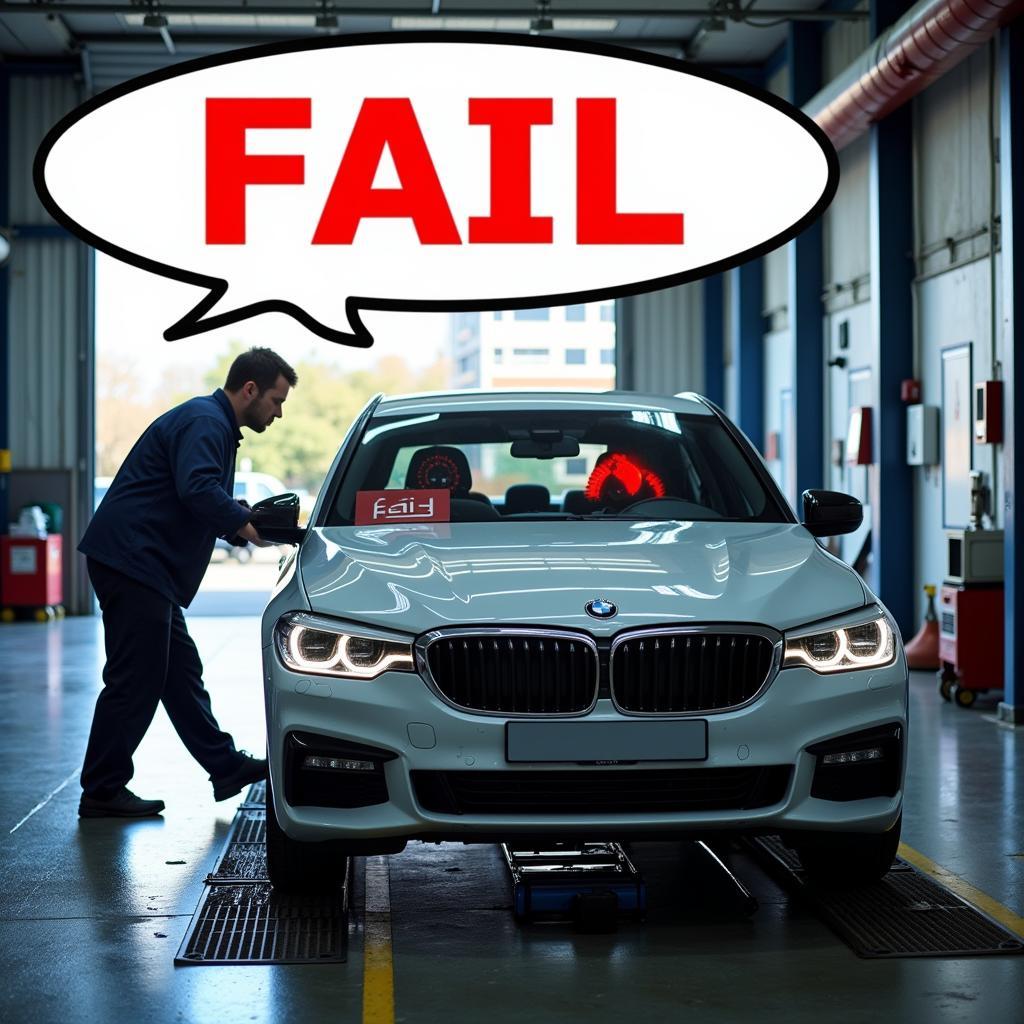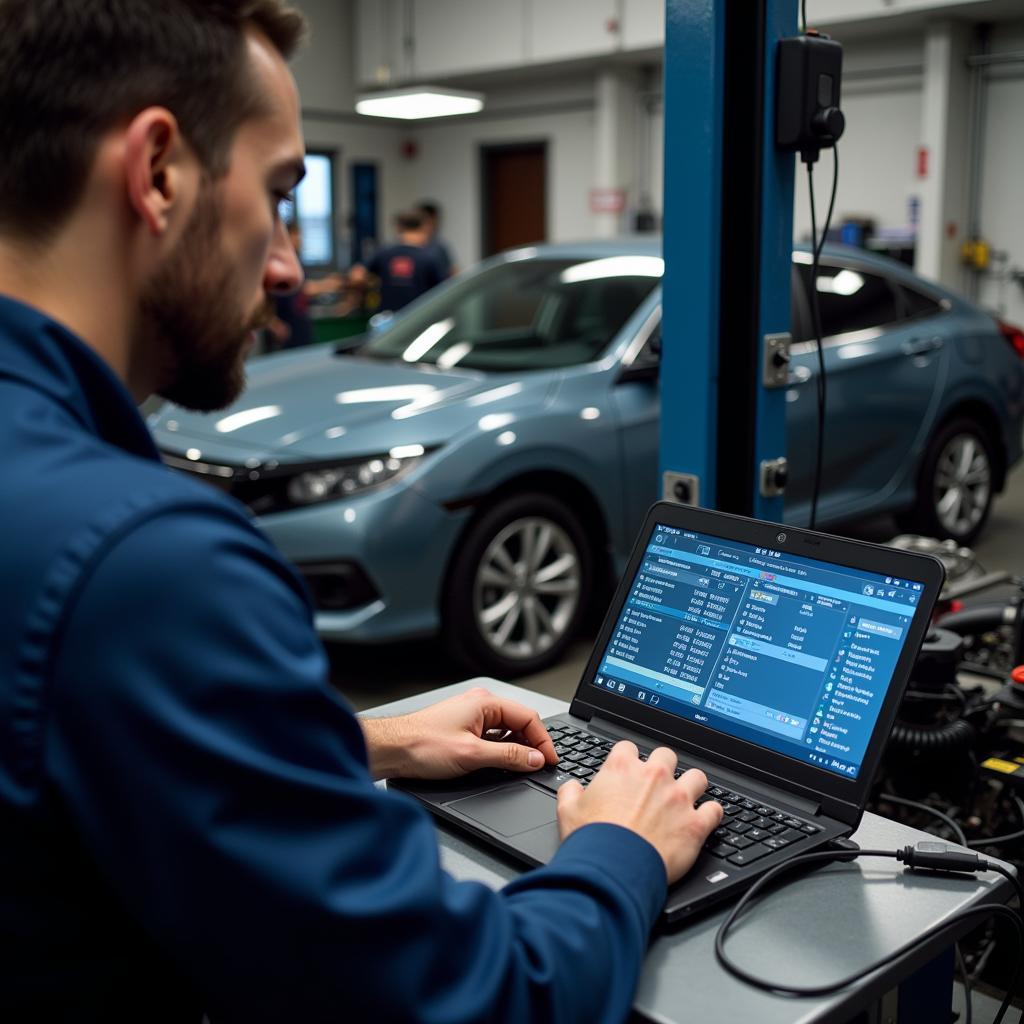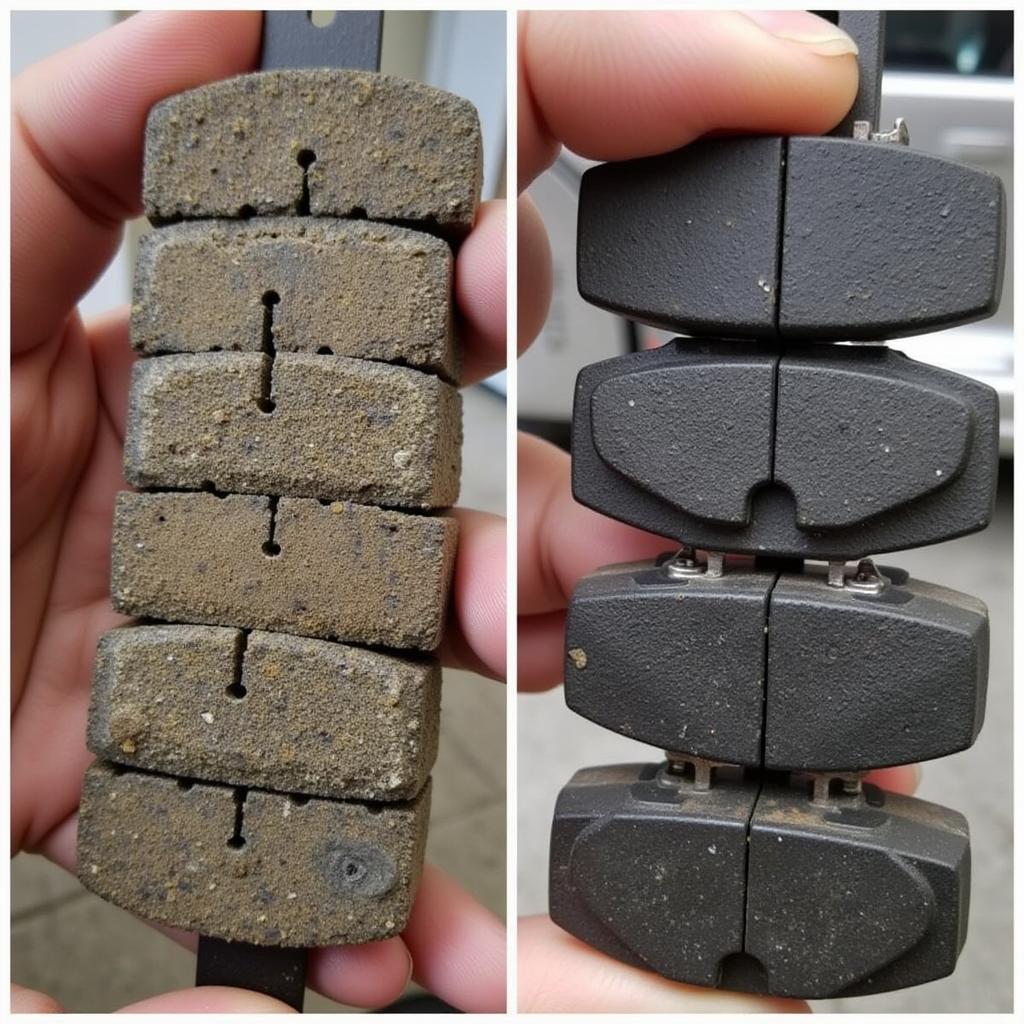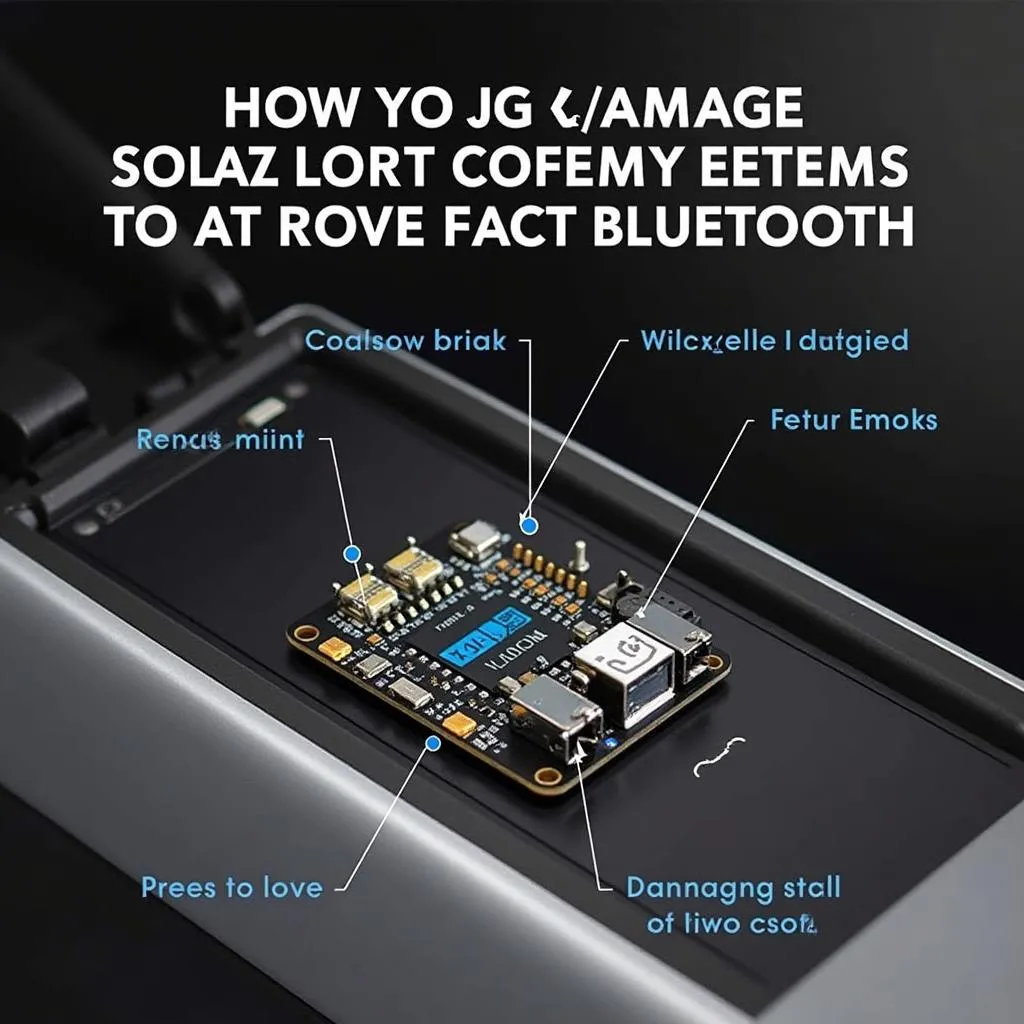The brake fluid warning light illuminating on your dashboard, especially right before your MOT test, can be a nerve-wracking experience. This light signals a potential problem with your car’s braking system, a critical safety component. Don’t panic! This article provides a comprehensive guide to understanding the brake fluid warning light, its implications for your MOT, and the steps you can take to address the issue.
Understanding Your Car’s Brake Fluid Warning Light
Your car’s braking system relies on hydraulic pressure to function correctly. This pressure is generated by the brake fluid, a special type of fluid designed to withstand high temperatures and resist compression. When the brake fluid warning light comes on, it typically indicates one of two things:
- Low Brake Fluid Level: The most common cause is a drop in brake fluid level. This could be due to a leak in the system or worn brake pads, which require more fluid to function.
- Faulty Brake Fluid Sensor: In some cases, a malfunctioning sensor could trigger the warning light even if the fluid level is adequate.
Brake Fluid Warning Light and MOT Implications
In the UK, a glowing brake fluid warning light can lead to an MOT failure. The MOT test is designed to ensure vehicles meet minimum safety standards, and a compromised braking system is a serious safety hazard.
Here’s why:
- Potential Brake Failure: Low brake fluid or a system leak can significantly reduce braking efficiency, increasing your stopping distance and the risk of an accident.
- Hydraulic System Issues: Ignoring the warning light can lead to further damage to the hydraulic system, resulting in costly repairs.
 Car Failing MOT Due to Brake Issues
Car Failing MOT Due to Brake Issues
Troubleshooting the Brake Fluid Warning Light
Before rushing to a garage, you can perform some basic checks:
- Consult Your Owner’s Manual: Your car’s manual will provide specific information on locating the brake fluid reservoir and checking the fluid level.
- Visually Inspect the Reservoir: Park your car on a level surface and locate the brake fluid reservoir (usually a translucent container with a cap labeled “brake fluid”). Check if the fluid level is between the minimum and maximum marks.
- Check for Leaks: Look for any signs of fluid leaks around the reservoir, brake lines, and near the wheels. Brake fluid is typically clear or yellowish and has a slightly oily texture.
Important: Never drive your car if you suspect a brake fluid leak or if the fluid level is significantly low.
When to Seek Professional Help
If you’re uncomfortable performing these checks or notice any leaks, it’s crucial to seek professional help immediately. A qualified mechanic can diagnose the problem accurately and perform the necessary repairs.
Remote Diagnostics and Software Solutions
In today’s technologically advanced world, remote diagnostics and software solutions are becoming increasingly prevalent in the automotive industry. For certain brake-related issues, remote diagnostics might be an option. Here’s how it can help:
- Identifying Sensor Faults: Remote diagnostics can often pinpoint a faulty brake fluid sensor, saving you unnecessary repairs.
- Software Updates: Some brake system problems can be resolved with software updates, which can sometimes be performed remotely.
However, it’s important to note that not all issues can be diagnosed or fixed remotely, especially those involving physical leaks or component failures.
 Mechanic Performing Remote Car Diagnostics
Mechanic Performing Remote Car Diagnostics
Preventing Future Brake Fluid Warning Light Issues
Taking proactive steps can help prevent future brake fluid warning light issues:
- Regular Brake Fluid Flushes: Brake fluid absorbs moisture over time, reducing its effectiveness. Consult your owner’s manual for the recommended brake fluid flush intervals.
- Prompt Brake Pad Replacement: Worn brake pads require more brake fluid, leading to a drop in the reservoir level. Replace your brake pads as recommended by your mechanic.
- Routine Vehicle Inspections: Regular car checkups can help identify potential brake problems, including leaks, before they escalate.
“Regular maintenance is key to a healthy braking system,” says [Expert Name], a seasoned automotive technician with over 20 years of experience. ” Addressing brake fluid concerns promptly not only ensures your safety but also prevents costly repairs down the line.”
Conclusion
The brake fluid warning light is a critical safety indicator that should never be ignored. By understanding its causes, implications for your MOT, and taking appropriate action, you can ensure a safe and reliable driving experience. Remember, your car’s brakes are your lifeline on the road – keep them in optimal condition!
FAQs
1. Can I top up my brake fluid myself?
While it’s possible to top up your brake fluid, it’s generally recommended to have a professional check for leaks and determine the underlying cause of the low fluid level.
2. How often should I change my brake fluid?
The recommended brake fluid change interval varies depending on the vehicle make and model. However, it’s generally advisable to have your brake fluid flushed every 2 years or as recommended in your owner’s manual.
3. Is it safe to drive with the brake fluid warning light on?
No, it is not safe to drive with the brake fluid warning light illuminated. This indicates a potential problem with your braking system, which could lead to reduced braking efficiency or even brake failure.
4. Can a faulty brake fluid cap trigger the warning light?
Yes, a loose or damaged brake fluid cap can sometimes cause a drop in pressure within the system, triggering the warning light.
5. My brake fluid warning light is flashing. What does this mean?
A flashing brake fluid warning light usually indicates a more serious issue with the braking system, potentially involving the ABS (Anti-lock Braking System). Seek professional help immediately.


